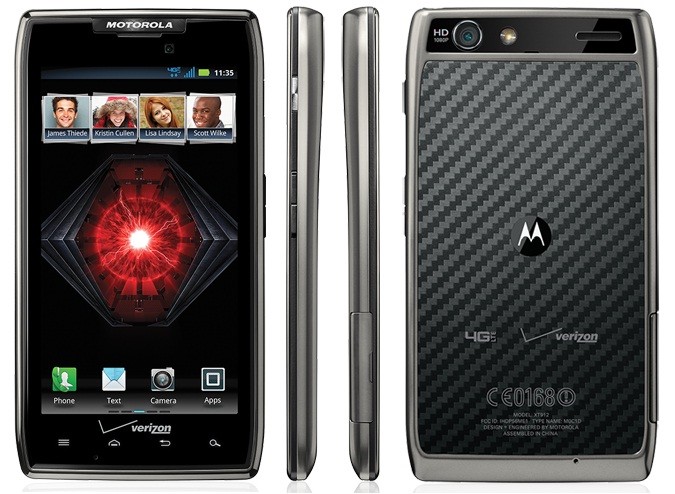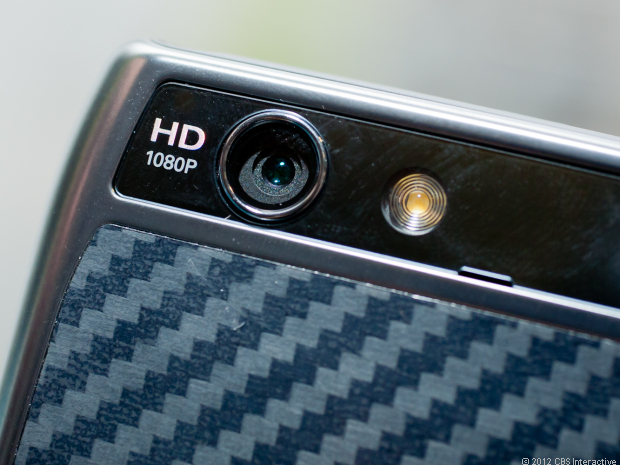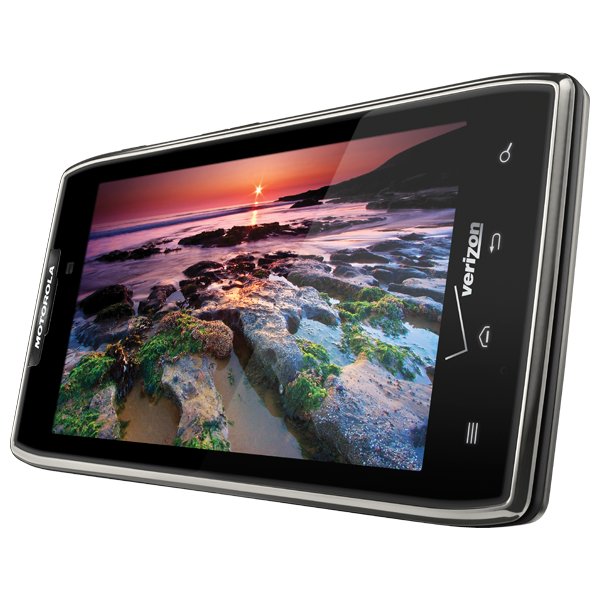Let me start by saying that this is my new favorite phone. In short, the Maxx is the Droid Razr with an extended battery, and despite that it’s doubled its battery life, the Motorola Droid Razr Maxx still maintains a very slim, attractive, and durable design with the same gorgeous display, a 1.2GHz dual-core processor, and fast Verizon 4G/LTE data speeds like its predecessor. It also has a lot of multimedia and security features to boot, and proves that a powerful Android superphone can remain thin yet still provide a ton of battery life.
Star Rating:![]()
Cost: [amazon_link id=”B0071G0KR4″ target=”_blank” container=”” container_class=”” ]$199-$299 on contract[/amazon_link]
Where to buy: [amazon_link id=”B0071G0KR4″ target=”_blank” container=”” container_class=”” ]Amazon[/amazon_link]
As mentioned, it’s really the exact same device as the Droid RAZR, which was introduced just a few short months ago, but with a gigantic 3300mAh battery that fills out the original RAZR’s distinctive scooped back. This selling feature along sets it apart from the rest of the Android crop, considering the problems of power-hungry dual-core processors and first-gen LTE chipsets. The Maxx’s battery life is nothing short of astounding for a dual-core LTE phone.
The Maxx runs $299 on a 2-year Verizon contract, while the original RAZR has fallen to $199. The Maxx also has the same stainless steel frame, the same Kevlar backplate, and the same arrangement of ports: HDMI, Micro USB and headphone up top, power button and volume rocker on the right side, and a small door covering the microSD and LTE SIM card slots on the left. You’ll get an 8-megapixel camera with LED flash, same as the original RAZR, and a 4.3 AMOLED display, which actually doesn’t compare too badly against the 720p Super AMOLED PenTile display on the Galaxy Nexus, a dual-core 1.2GHz processor, 16GB of internal storage and blazing fast 4G LTE connectivity into a slender case only 7.1 millimeters thick.
Performance wise, it’s as fast as its competitors. Sound quality during voice calls is superior, which is not a surprise with a Motorola phone. Motorola is synonymous with excellent call quality. The loaded software is decent, but I do prefer HTC Sense, and of course, the Nexus’s Ice Cream Sandwich OS over what the Maxx offers. Still though, the skin is still very usable, Smart Actions are still extremely useful, and Webtop is a nice bonus.
As I just touched on, the RAZR Maxx ships without Android 4.0 Ice Cream Sandwich (ICS). Rather, it’s still sporting the latest 2.3.6 Gingerbread upgrade, and while Motorola promises an ICS upgrade in the future, it will probably pale in comparison to the version that the Galaxy Nexus will house once ICS hits the RAZR.
[amazon_my_favorites design=”4″ width=”250″ title=”Motorola Droid RAZR Maxx” market_place=”US” ASIN=”B0071G0KR4″ color_theme=”Onyx” columns=”1″ rows=”3″ outer_background_color=”” inner_background_color=”” background_color=”” border_color=”” header_text_color=”#FFFFFF” linked_text_color=”” body_text_color=”” shuffle_products=”True” show_image=”True” show_price=”True” show_rating=”True” rounded_corners=”False”/]The DROID RAZR MAXX features solid, attractive hardware and Motorola’s Smart Actions feature makes it one of the smartest smartphones I’ve ever used. And while the Samsung Galaxy Nexus gives you Ice Cream Sandwich, a larger screen and better hardware, the battery life on the MAXX is an enormous deal-breaker. The display, while not as good as the Samsung Nexus or phones like the Rezound and the LG Nigro, the Motorola DROID RAZR MAXX’s display can still compete. And depending on what Motorola does with Google’s much improved Android 4.0 UI, the RAZR MAXX could be a completely different story when Motorola releases its ICS update.
A stealthy sleek smartphone running Android 4.0 with a 3,300 mAh battery could be a real winner, and the inevitable drop to $199.99 could make this phone too good to be true. Actually, Amazon has it on sale right now [amazon_link id=”B0071G0KR4″ target=”_blank” container=”” container_class=”” ]for $199[/amazon_link].
Check out the video review by CNET….
http://youtu.be/WDaNyl7ms2g









